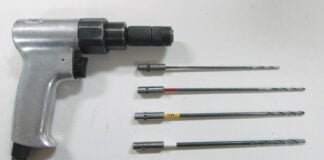
The winding road traveled by Epic Aircraft rounded what could be the last bend today. On Wednesday, April 7, the bankruptcy judge received a proposal that would, in essence, put a consortium of Epic LT builders in the driver’s seat. In the agreement, China Aviation, an aerospace concern owned by the Chinese government, will be allowed to develop the Epic aircraft for sale outside of North America. According to a report in The Oregonian, China Aviation and the LT Builders Group will pay $4.3 million for the assets of the collapsed company.
The lead creditor in the proceeding is quoted as calling the agreement, “an ideal cross between a shotgun wedding and a Mexican standoff.” Federal judge Randall Dunn told China Aviation and LT Builders Group this week that if they couldn’t come to an agreement, he would award the assets to a third party, Harlow Aerostructures. While the judge has received the new agreement between LT Builders Group and China Aviation, he still must approve the deal.
It’s clear that the judge was attempting to diminish the damage done to the owners of 15 partially completed “kit” aircraft who had slapped down as much a $1.5 million to “build” their own pressurized turboprops. China Aviation, for its part, admitted that the desire is to take aircraft (the Epic LT turboprop and the Elite twinjet) back to China to jumpstart the country’s aero industry.
Forget for a moment that Epic tried to get the LT certified here and in Canada, without success, leaving you to wonder if the stumbling block was something in the design, lack of money, or both. In many ways, that’s a shame: The LT would slot in nicely above the TBM-700/850 and Piper Meridian but below the mammoth Pilatus PC-12—fertile ground for a fast, theoretically capable turboprop single in a business role.
Under the new agreement, it appears that both will be satisfied, though at the moment it remains unclear how the new Epic will manage production at Bend. With the reworking of the rules that govern Experimental/Amateur-Built aircraft last year, new requirements are in place to denote how much commercial assistance is used, and that amount is taken away from the percentage the builder is allowed to claim toward the majority of work. If the builders complete their aircraft in a way that truly meets the letter of the rules, the process will be long and difficult.

It has seldom been voiced but was widely understood in the industry that the Epic “homebuilt” program was the very thing that set the FAA into looking at abuses in the Experimental world and caused more than 18 months of heartburn, long meetings, builder angst and kit-manufacturer concern. As initially proposed to builders The idea that you could spend “a few weeks” helping to construct your pressurized, turboprop, retractable-gear single and still get credit for doing the “majority” of the work was laughable, but somehow Epic managed to get a local DAR or the FAA to initially buy into the idea, and sign off the Bend-built LTs as Experimental/Amateur-Built aircraft.
Moreover, there was no option to take the kit out of the factory and build independently. While hired-gun builders popular in the 1980s and 1990s kept a low profile, Epic was absolutely in-your-face with its process. In fact, documents that followed the collapse of Epic (and its many shell companies) disclosed that at least some builders were required to appoint a build manager to oversee the project at the factory, and that manager was to be an employee of Epic.
The legal documents released last summer also painted a picture of “creative” business practices, and one creditor is quoted as saying the original Epic program and its intertwined subsidiaries amounted to a Ponzi scheme.
UPDATE: Where do we go from here? According to Douglas King, the new group intends to resume kit production and builder assistance in Bend. I spoke with King on Thursday afternoon and he said that, “We intend to run it honest and straight, according to the law, be good neighbors here in Bend. We’re going to do what we say…and not over promise. We are going to work really hard at producing high-quality airplanes.”
King defended the in-house build process and laid the lion’s share of the blame for misunderstandings within the industry at the feet of former Epic boss Rick Schramek. “We all spent a lot more time building than we were led to believe,” he said, indicating that he has spent more than 12 weeks at the Bend facility and still has not installed the engine, avionics, or interior. If there was friction between industry members and Epic it wasn’t the “excellent employees” who worked in Bend or the builders, “It was Schramek,” he said.
In continuing to build kits, King said that “we’re going to follow the intent and letter of the law. We’re going to quietly move on and let builders finish their airplanes.” He indicated that the new program won’t be as large as Epic was at its height. “We aren’t going to hire as many people,” King said. “The economy is too hard for that.” But, he said, the LT Builders Group would forge ahead.
The effort won’t be without challenges. King said that this commentary could well cast a spotlight on the situation, but I’m certain that however this new program goes forward it will be closely scrutinized. I also suspect that much work remains to get the LT through certification—presuming that the goal is to certify the design and build them for North American consumption at the Bend facility in addition to supporting the kit effort. Or China Aviation could promise to help the remaining builders finish their LTs while packing the intellectual property and tooling for a long boat ride across the Pacific. It’s too soon to know.













